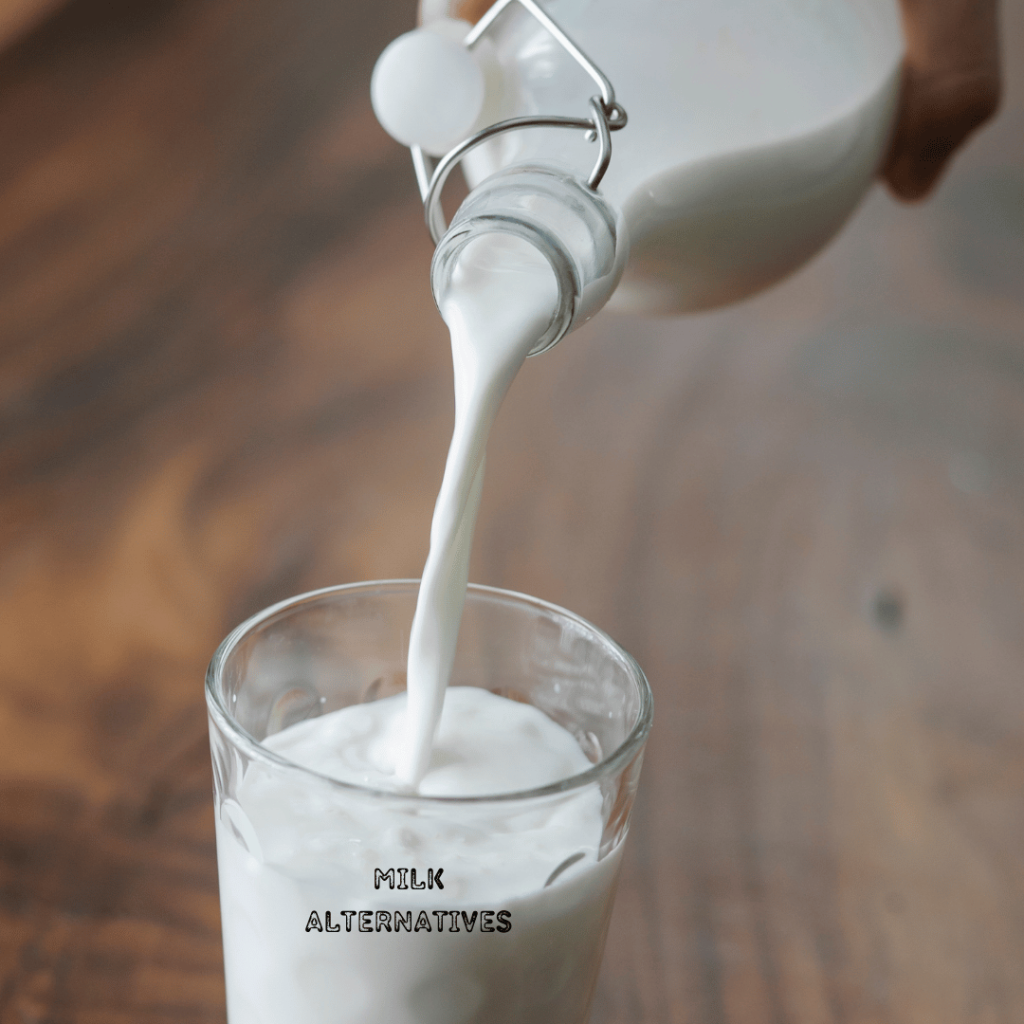
milk alternatives
Dairy milk is a crucial source of essential nutrients, including energy, protein, fat, calcium, magnesium, phosphorus, and vitamin D in the diet of people (1). Additionally, dairy milk is also an important provider of iodine, vitamin B12 and riboflavin. Population groups with low milk intake are often deficient in these key nutrients (2).
In recent years, plant-based milk alternatives have gained significant popularity. These alternatives are increasingly produced for individuals with lactose intolerance, milk protein allergies, as well as for cultural, ethical, or dietary reasons, such as veganism, flexible dieting, Paleo diets, and others (1). Plant-based milk substitutes are commonly used to replace bovine milk in people’s diets (2).
Plant-based milk alternatives categorized into four main groups: nuts (such as almonds, walnuts, and hazelnuts), legumes (including peas, chickpeas, lentils, and soy), seeds (like hemp, sesame, pumpkin, and watermelon seeds), and grains (such as rice, wheat, millet, and barley) (3). However, relying solely on these alternatives can lead to nutrient deficiencies. When comparing plant-based milk alternatives to bovine milk, consumers are cautioned not to view them as complete nutritional substitutes for milk (1).
When the nutrient compositions of milk and alternatives are examined, cow’s milk still remains the best source of fats, protein, and micronutrients (4). The macro-nutrient composition and calcium content of bovine milk and plant-based milk alternatives are presented in the table below.
Nutrient composition of bovine milk and plant-based milk alternatives (1, 5).
| Product | Water (g) | Energy (kcal) | Protein (g) | Total lipid/fat (g) | Carbohydrate, by difference (g) | Calcium (mg) |
| Bovine milk, whole | 88.13 | 61.00 | 3.15 | 3.27 | 4.78 | 113 |
| Soy milk alternative, brand 1 | – | 58.00 | 3.16 | 3.68 | 2.63 | 0 |
| Coconut milk alternative, brand 3 | – | 50.00 | 1.25 | 5.00 | 3.75 | 0 |
| Rice milk alternative | 89.28 | 47.00 | 0.28 | 0.97 | 9.17 | 118 |
| Almond milk alternative, brand 1 | 97.05 | 15.00 | 0.59 | 1.10 | 0.58 | 197 |
A research compared the concentrations of elements between dairy milk and plant-based milk alternatives collected from local supermarkets in Rome in Italy (6).
Concentrations of elements (mg/kg) in dairy milk and plant-based milk alternatives (6).
| Element | Dairy milks (mg/kg) | Plant-based milk | ||||
| Legume-based (mg/kg) | Cereal-based (mg/kg) | |||||
| Cow | Soy | Rice | Oat | Spelt | ||
| Ca | 1340±86 | 1200 | 39±11 | 174±36 | 109±34 | |
| K | 1490±78 | 1000±250 | 154±81 | 394±57 | 571±35 | |
| Mg | 111±6 | 142±16 | 21.0±2.3 | 60±21 | 24.0±2.6 | |
| Na | 346±26 | 251±22 | 275±180 | 364±93 | 329±26 | |
| P | 481±25 | 311±100 | 76±36 | 147±37 | 105±7 | |
| Element | Plant-based milk | ||||||
| Nut-based (mg/kg) | Seed-based (mg/kg) | Pseudo-cereal based (mg/kg) | |||||
| Almond | Coconut | Hazelnut | Walnut | Cashew | Hemp | Quinoa | |
| Ca | 202±130 | 71±32 | 1200 | 1200 | 111±7 | 177±8 | <LOD |
| K | 230±75 | 1460±1000 | 306±1 | 223±4 | 217±1 | 982±38 | 224±4 |
| Mg | 95±28 | 165±120 | 71.9±0.5 | 77.1±1.1 | 70.3±0.5 | 121±4 | 32.7±0.7 |
| Na | 383±200 | 226±140 | 497±6 | 332±4 | 308±5 | 130±4 | 410±4 |
| P | 214±92 | 410±180 | 93.7±1.1 | 122±2 | 98.2±2.0 | 212±8 | 73.5±1.2 |
Most plant-based milk alternatives contain comparable amounts of the major nutrients, typically ranging from 50% to 70% of the content found in cow’s milk, with some exceptions (6).
Cow’s milk provides more than 60% of the daily protein requirement and about 42% of of the daily calcium requirement for young children. Additionally, 8 ounces of skim milk supply the daily need for vitamin B12 and contain 0.8% of the Reference Daily Intake (RDI) for folate, as well as 20% of the RDI for calcium (4).
Soy milk has been identified as the one of best substitutes for cow or goat milk in our diets (6). The primary ingredient in soybeans is protein, and they contain more fat and less starch than most legumes, with less than 1% starch in mature seeds. Soy milk is rich in isoflavones (7), which are phytonutrients, known for their cancer-fighting properties. Additionally, soy milk provides a source of polyunsaturated fat that supoorts heart health. It can be better nutritional alternative to replace cow’s milk in the human diet compared to other milk alternatives. However, some people prefer the flavor of almond milk over soy milk (8). Almond milk, on the other hand, is a good source of monounsaturated fats and vitamins A and E, which are beneficial for heart health (8).
Almond milk contains all major nutrients except calsium (Ca) and potassium (K) (6). It provides about 70% of the daily recommended calcium intake for toddlers. However it contains low amounts of carbohydrates and fat (4). While almond milk provides only 10% of the recommended daily protein intake for children in the same age group, it provides more than half of the recommended daily protein intake in similar cow’s milk consumption. Almond milk also contains higher levels of sodium compared to other alternatives. Additionally, almond milk does not contain vitamin B12 and has very little folate (4).
Beef milk is generally low in vitamin E, but the almond milk providing 42% of the recommended daily intake of 15 mg. Vitamin E is an antioxidant that can protect cells from the cancer, and cardiovascular disease promoting effects of free radicals (1).
Coconut milk contained all major elements except calsium (Ca) (6). It is high in saturated fat but contains medium chain triglycerides (MCTs), which have several beneficial effects on HDL and LDL cholesterol, body mass, waist circumference, insulin sensitivity, energy expenditure, and overall fat (1).
Rice milk contains all major nutrients except sodium (Na) (6).
In conclusion, cow milk is significant source of the key minerals such as calcium (Ca), potassium (K), magnesium (Mg), sodium (Na), and phosphorus (P). Soy and coconut milks are good sources of magnesium, while hazelnut milk provides a large amount of sodium. Soy milk has a higher protein content compared to other plant-based milks. Almond milk is a good source of monounsaturated fats and vitamins A and E, which are beneficial for heart health, and many people prefer the flavor of almond milk.
Author Kubra Haktan
References
- Chalupa-Krebzdak, S., J.Long, C., & M.Bohrer, B. (2018). Nutrient density and nutritional value of milk and plant-based milk alternatives. International Dairy Journal, 84-92.
- Mäkinen, O. E., Uniacke-Lowe, T., O’Mahony, J. A., & Arendt, E. K. (2015). Physicochemical and acid gelation properties of commercial UHT-treated plant-based milk substitutes and lactose free bovine milk. Food Chemistry, 630-638.
- Qamar, S., Manrique, Y. J., Parekh, H., Falconer, J. R., & Falconer, J. R. (2019). Nuts, cereals, seeds and legumes proteins derived emulsifiers as a source of plant protein beverages: A review. Critical Reviews in Food Science and Nutrition , 1-21.
- Collard, K. M., & McCormick, D. P. (2020). A Nutritional Comparison of Cow’s Milk and Alternative Milk Products. Academic Pediatrics.
- USDA2018). USDA. United States Department of Agriculture food composition database: https://fdc.nal.usda.gov/ndb/
- Astolfi, M. L., Marconi, E., Protano, C., & Canepari, S. (2020). Comparative elemental analysis of dairy milk and plant-based milk alternatives. Food Control.
- Jayachandran, M., & Xu, B. (2019). An insight into the health benefits of fermented soy products. Food Chemistry, 362-371.
- Anonim. (2018, November). Almond Milk or Soy Milk—Which is the Healthier Alternative? University of notre dame.
